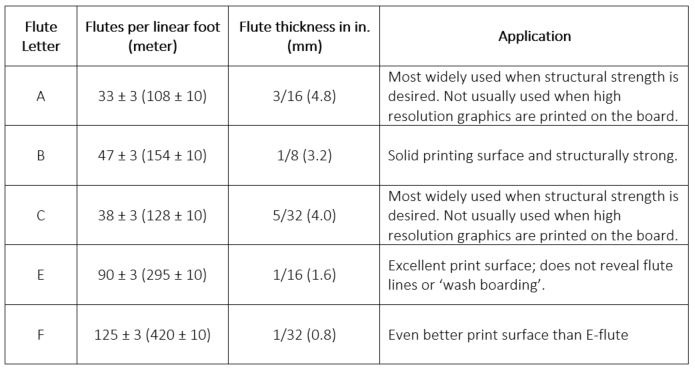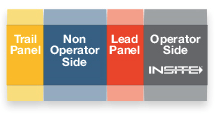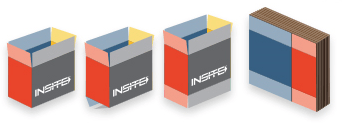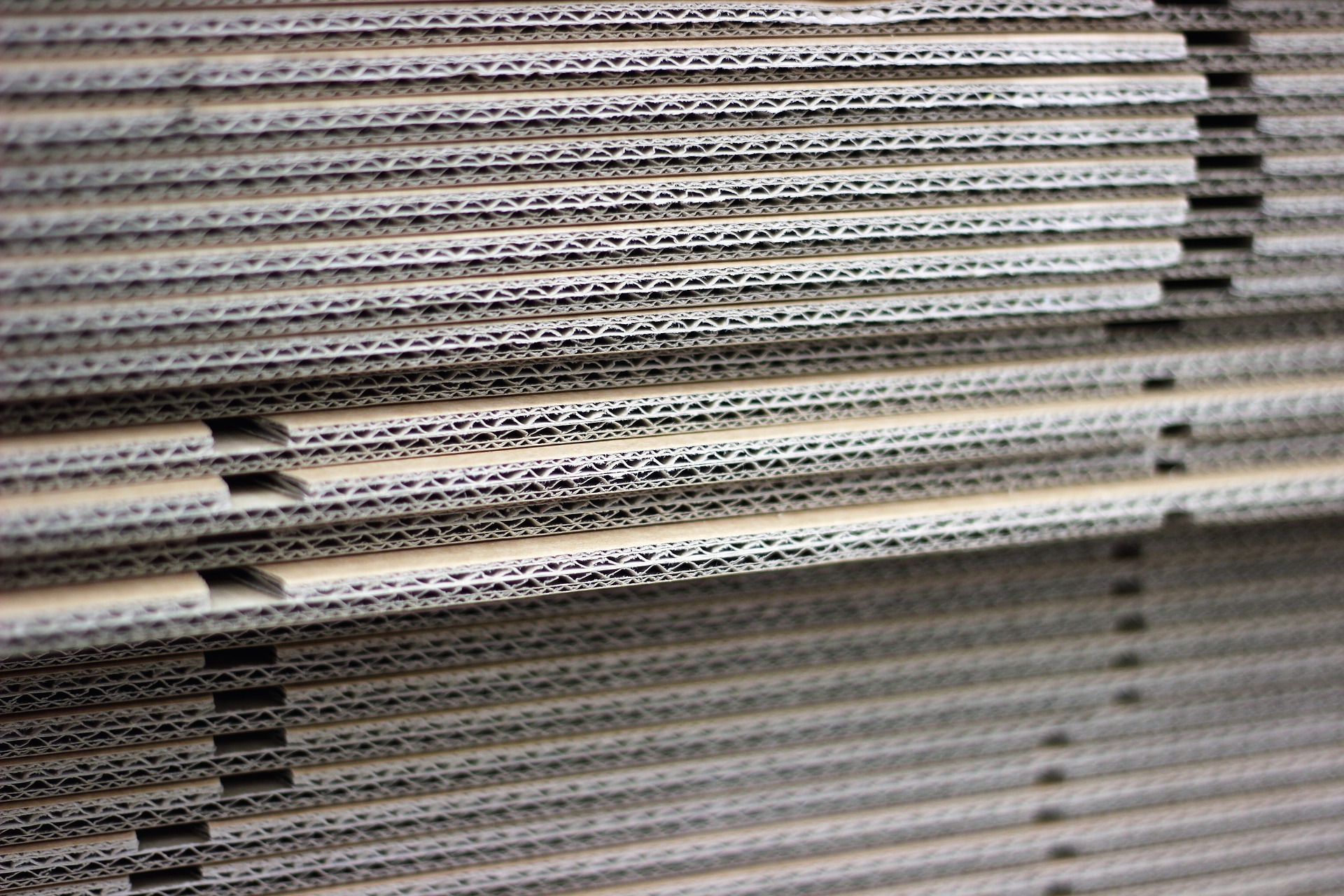Corrugated 101: A First Step Toward Becoming a Pro
Published May 25, 2018
What the Pros know
Many of you are experienced pros in the consumer packaged goods (CPG) industry. You don’t have to think about cardboard boxes (or rather, corrugated cases): walls, flutes, slotted case types, trays, glued or self-locking, a Bliss Box—none of it is a mystery to you. You’re even casually conversant on the merits of bursting vs. edge crush testing.
If we’ve just described you, then you know how to order the proper cases so they run flawlessly through your case erector, case packer, and case sealer before being stacked cleanly on pallets, stretch wrapped, and shipped. Then you move on to the next item on your to-do list.
But you didn’t always know these things about CPG cases and containers. You had to learn them, and learning some of these nuances can be daunting. This post, and others like it, are going to look at the basics of cardboard boxes. And we really mean basics, starting with the most basic tidbit of all: this is not a cardboard box. It’s a “corrugated” box, and individual units are known as “cases.”
If you could use some Corrugated Packaging 101, this post is for you. Read on!
If you’re not a Pro
It’s time to make your customers happy—and, thank goodness, to earn some revenue after spending countless hours in R&D as you tested, refined, and tested again. You’ve finally settled on a product you’re happy with, and now you have to figure out how to get it to your customers. You want it to arrive in pristine condition, with maximum efficiency, at the lowest possible cost both to you and your environmental impact. So, you select a case. Easy, right? Not so fast.
Truth be told, there’s enough detail and differences with corrugated packaging that we can, and probably will, spend multiple posts on the subject. But first, let’s start with a few elementary facts.
Your basic corrugated material is made up of a number of layers of what amounts to very heavy paper. At least one layer is corrugated or “fluted” in waves, and attached to at least one layer of flat paper, called a liner. There you have it; with at least one layer of flutes and one liner, you have corrugated packaging material. Sometimes referred to as containerboard, this material comes in a wide variety of configurations.
The first consideration for corrugated case material has to do with the number and combination of flutes and liners. These are generally referred to as “wall thicknesses.” There are four common corrugated material thicknesses:
Single Face – one piece of fluted paper glued to one sheet of liner.
Single Wall – one piece of fluted paper glued between two liner sheets. (INSITE’s case formers and case sealers run primarily Single Wall material).
Double Wall – two pieces of fluted paper glued between three liner sheets, alternating sheet/flute/sheet/flute/sheet.
Triple Wall – three pieces of fluted paper glued between four liner sheets, in the same alternating pattern.
It’s easy enough to see that additional layers mean additional strength. It also, of course, means additional weight and additional cost.
Now that you get the types of walls and how different wall thickness can be achieved, let’s focus on the flutes themselves. The flutes are what really give the packaging strength to resist crushing and bursting as the cases are stacked and shipped. The flutes come in five different dimensions, identified by the letters A, B, C, E, and F. These letters do NOT indicate sizes (smaller to larger or anything rational like that) but rather the order in which the flutes were invented. The most common flute size is C.

Note: INSITE’s case erecting machines primarily run B and C fluted cases.
All this, and we’ve only touched on the very basics of corrugated packaging (number of layers and flute dimensions). Now that you have an idea of materials, what ‘type’ of case do you order?
The most common type of corrugated packaging is the Regular Slotted Case, commonly referred to as RSC. These are the cases that INSITE’s erectors and sealers process. An RSC comes from a single piece of corrugated fiberboard. Fold up the bottom flaps and seal them (an INSITE case erector can do this for you), drop in your consumer packaged goods, then seal the top (this is where an INSITE case sealer gets the job done) and ship.
Regular Slotted Cases (RSCs):

The image above and below depict a left-handed RSC case splayed out flat. You’ll note that in the bottom image we’ve colored and labeled each panel to depict how this particular case will load, and flow, when used with an INSITE case erector.

Since most case erector manufacturers require consistent case- and machine hand (ie, a Left-Handed RSC requires a Left-Handed case erector, and vice versa), the following graphic demonstrates how this left-handed RSC looks before, during and after the case forming process.

When it comes to forming and erecting corrugated material, a couple of other common case types include Bliss Boxes and Trays. For now, our case erectors and case sealers are not designed to handle these two types of cases.
Bliss & Rigid
A Bliss Box is a three piece container that incorporates a single piece of unbroken corrugated board (forming the top, the side panels and the bottom) along with two separate end panels. Since Bliss Boxes require six or more joints to be sealed, they are considered more rigid than standard RSCs. As a result, they are also known as Rigid Boxes.
Trays
Trays are a single piece of corrugated material designed to have an unbroken bottom with multiple layers of fiberboard incorporated into the end panels. Trays often don’t have covers. Because of the these characteristics, trays are not typically used as shipping containers, but rather as “inner” containers that provide rigidity and protection for heavy, sharp, or delicate products.
Boxing it up
These are just a few of the options when it comes to considering the type and style of corrugated material to use when shipping your products. Over the years there have been volumes of research and science dedicated to finding effective ways to protect and ship the products that you manufacture.
While we’ll undoubtedly touch on material considerations in future posts, you can be sure that your corrugated packaging provider will have whatever answers you seek when it comes to this deceptively complicated part of the CPG industry. Ultimately, they know their products, and can help you protect and transport yours. And now for the shameless plug for INSITE: whatever product you produce and whatever case you choose, INSITE will be happy to help you identify the right equipment to erect and seal your cases. After all, case erectors and case sealers are all we do!
